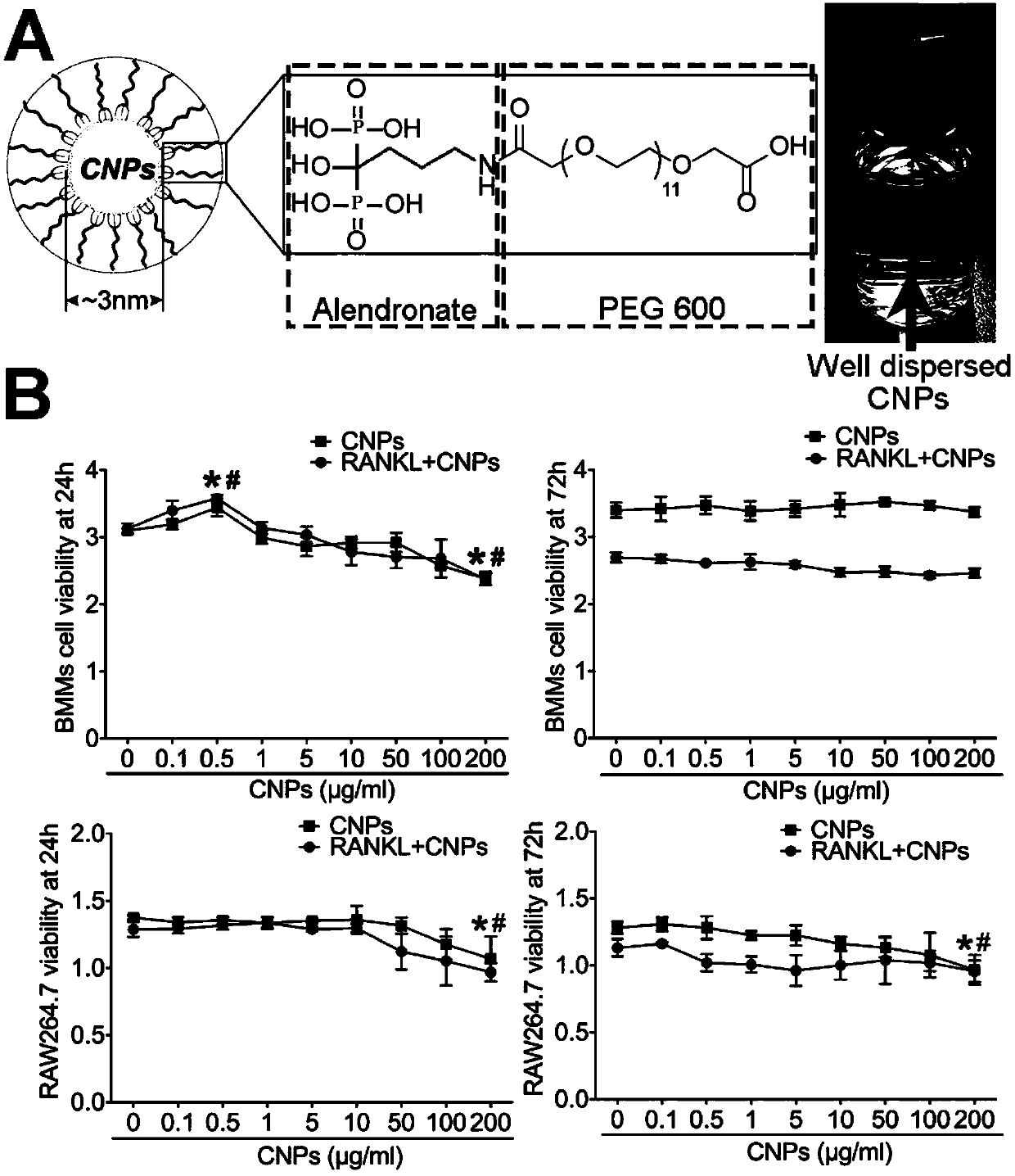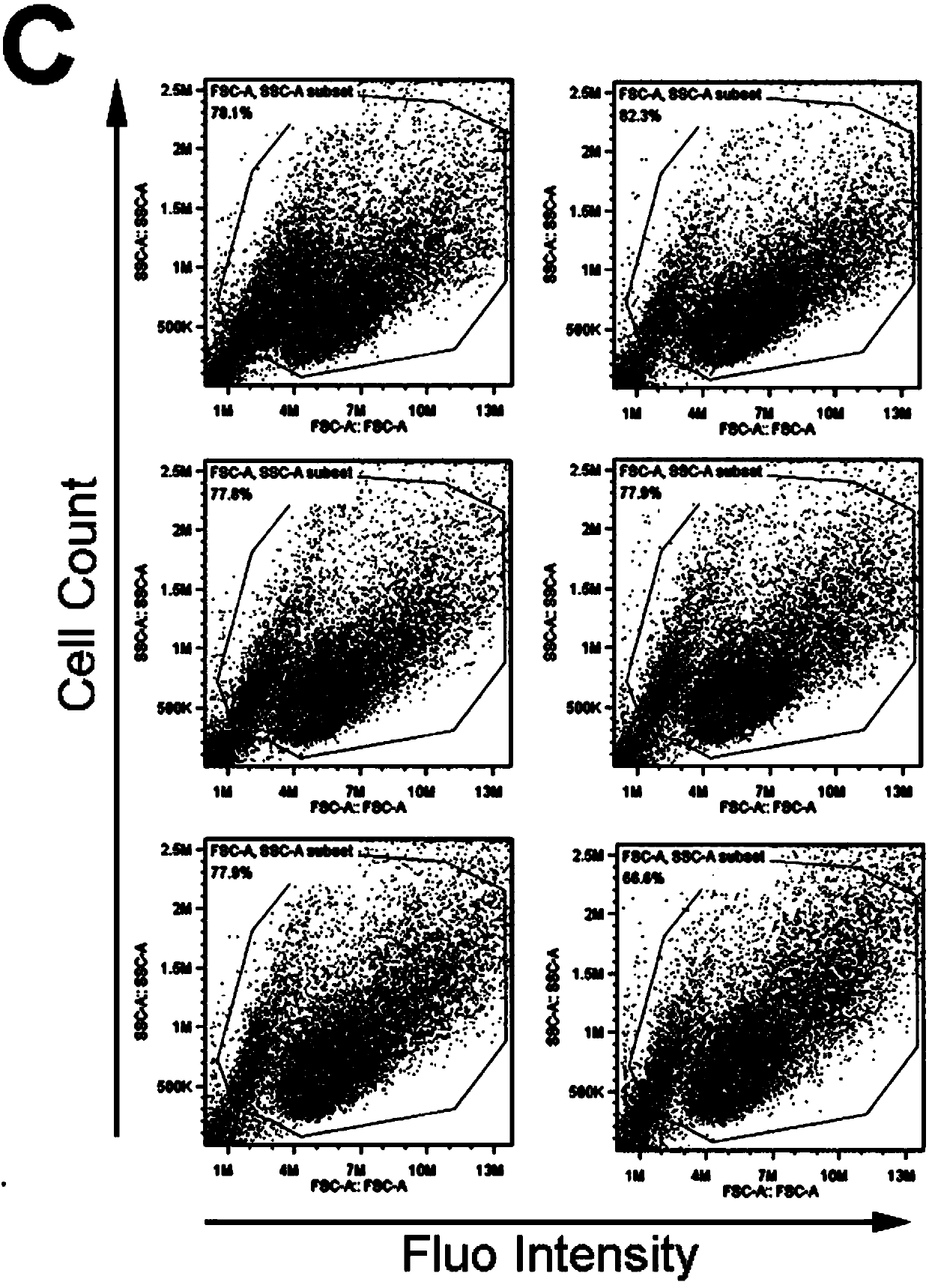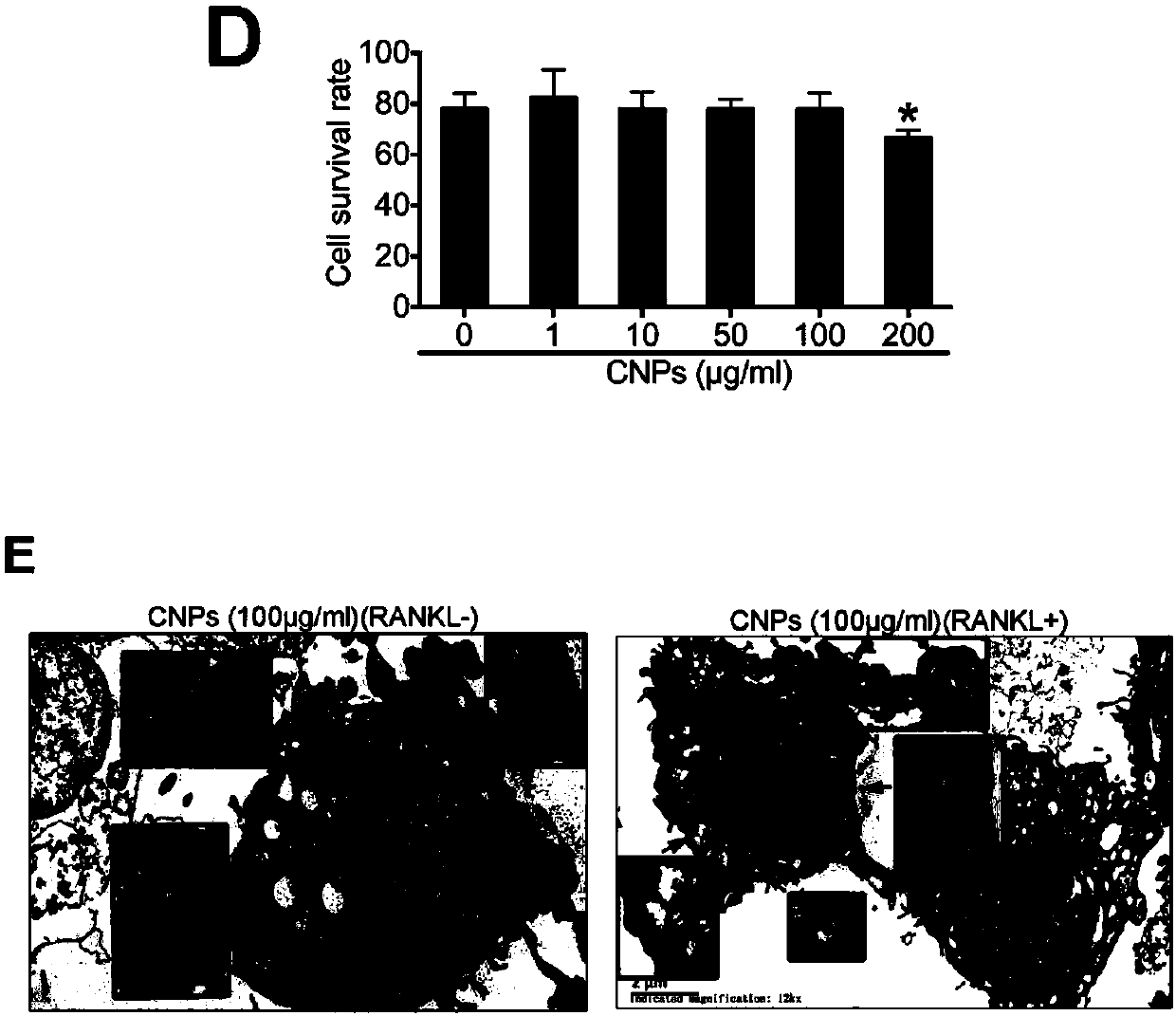Applications of pH-responsive nanometer material in preparation of anti-bone resorption drugs with effects of osteoporosis prevention and treatment
A nanomaterial, osteoporosis technology, applied in the field of biomedicine, to shorten the life cycle, prevent and treat osteoporosis, and promote the effect of new bone formation and vascularization
- Summary
- Abstract
- Description
- Claims
- Application Information
AI Technical Summary
Problems solved by technology
Method used
Image
Examples
Embodiment 1
[0033] Example 1. High-concentration pH-responsive nanomaterials inhibit the activity of mature osteoclasts
[0034] BMMs cells were divided into 1×10 3 cells / well were inoculated in a 96-well plate, and the medium was discarded after the cells were overgrown. ), the pH-responsive nano The materials were added to each well plate containing fresh medium, while RANKL (100 ng / mL) and M-CSF (50 ng / mL) were used to induce BMMS cells to differentiate into osteoclasts. Cultured for 24h and 72h, respectively, to observe the effect of pH-responsive nanomaterials RNAKL-induced proliferation of BMMS cells. At the observation point, the cell activity was detected by the CCK-8 method, the number of living cells was detected by the flow cytometer, and the cell-nanoparticle interaction was observed by the transmission electron microscope. The result is as figure 1 As shown in B, C, D and E, the abscissa is the dose of pH-responsive nanomaterials at different concentrations, and the ordin...
Embodiment 2
[0035] Example 2, pH-responsive nanomaterials early (within 72h) promote RANKL-induced osteoclast cell generation
[0036] Grouping: Group 1, no RANKL induction, with pH-responsive nanomaterials group; Group 2, RANKL (100ng / mL) induction, 1μg / mL, 10μg / mL, 100μg / ml pH-responsive nanomaterials experimental group; Group 3, RANKL (100ng / mL) induction, 1μg / mL, 10μg / mL, 100μg / mL trivalent ion experimental group.
[0037] BMMS cells were divided into 1 × 10 3 cells / well were inoculated in a 96-well plate, and the medium was discarded after the cells were overgrown. ), the pH-responsive nanomaterials were added to each well plate containing fresh medium, while RANKL (100ng / mL) and M-CSF (50ng / mL) were used to induce BMMs cells to differentiate into osteoclasts. Tartrate-resistant acid phosphatase (TRAP) staining was performed 72 hours after induction. After discarding the medium, wash with PBS 3 times, 3 min each time. Fix with 4% paraformaldehyde for 20 minutes, wash with PBS 3 t...
Embodiment 3
[0038] Immunofluorescent staining of FAK (Actin Cytoskeleton and Focal Adhesion Staining) was performed after induction for 72 hours. After the cells were taken out, the medium was discarded, washed twice with 1×PBS, fixed with 4% paraformaldehyde at room temperature for 20 min, and washed twice with 1×PBS. Permeate the cells with 0.1% Triton X-100 for 5 minutes, and wash twice with 1×PBS. Blocking buffer (1%BSAin 1×PBS) fixed for 30min. The primary antibody (Anti-Vinculin) was diluted to the working concentration (1:300) in Blocking buffer, and the cells were incubated at room temperature for 1 h. Wash with 1×wash buffer (0.05% Tween-20in 1×PBS) three times, 5-10min each time. The secondary antibody (Alexa Fluor 488Goat Anti-Mouse IgG (H+L) Antibody, Invitrogen) was diluted to the working concentration (1:500), and TRITCconjugated Phalloidin (1:500) was added at the same time. Incubate together for 1 h at room temperature. Wash with 1×wash buffer three times, 5-10min each...
PUM
 Login to View More
Login to View More Abstract
Description
Claims
Application Information
 Login to View More
Login to View More - R&D Engineer
- R&D Manager
- IP Professional
- Industry Leading Data Capabilities
- Powerful AI technology
- Patent DNA Extraction
Browse by: Latest US Patents, China's latest patents, Technical Efficacy Thesaurus, Application Domain, Technology Topic, Popular Technical Reports.
© 2024 PatSnap. All rights reserved.Legal|Privacy policy|Modern Slavery Act Transparency Statement|Sitemap|About US| Contact US: help@patsnap.com










